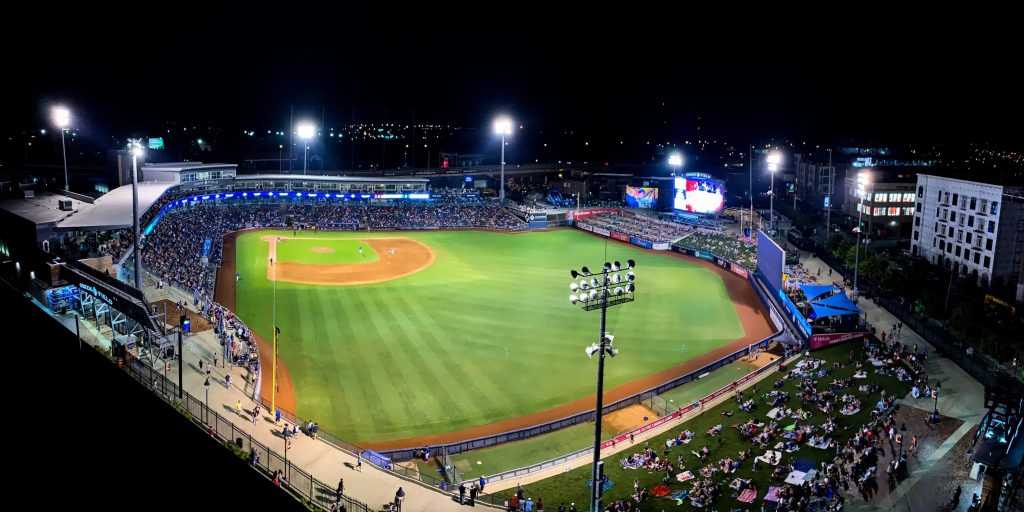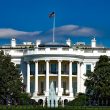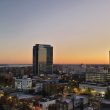Minor league baseball is helping cities hit a revitalization home run
It’s that time of year again—the crack of the bat, the roar of the crowd when the home team hits a home run, not to mention the peanuts, Cracker Jacks and hot dogs! Nothing compares to the fun of gameday at the stadium, enjoying the national pastime of baseball. Some mid-sized cities have taken the celebration and excitement of opening day and turned it into a year-round return on investment by building hometown baseball stadiums, creating a focal point for downtown revitalization.
Turning parking into pop flies
In 2015, Fayetteville, N.C.’s downtown needed a boost, and the City Council was optimistic that baseball could be a kick start to a further revitalization of the area. According to current City Manager Doug Hewett, studies were commissioned to show it was feasible to build a minor league stadium in downtown Fayetteville. They showed the population and surrounding areas were interested enough and vibrant enough that it would support it.
“The actual night we had the consultants give us the feasibility report, we had a letter delivered to us from the Houston Astros, who had just won the World Series, that said ‘we are so sure that Fayetteville is a good place for baseball as well that we’d like to enter into a memorandum agreement with you to be your exclusive partner to design, build and manage a minor league stadium,” Hewett said.
Construction began on Fayetteville’s Segra Stadium in 2017 as part of a $100 million revitalization project, with the $40 million stadium serving as the anchor. The city created a synthetic TIF (tax increment financing) around the site, which was 14 acres of parking lot. “We drew an area around the stadium that we knew if the stadium was built and constructed, that tax values would increase above the base,” Hewett said. The city was also able to sell one of its office buildings that was near the stadium site, which put it back on the tax rolls for the city.
“Between putting that building back on the tax rolls, the improvements in the surrounding properties and the city building a parking garage, which provides revenues that help offset the cost, we were able to build and finance the stadium, the public sector improvements, in addition with the rent from the Astros, without having to raise our property tax rate,” Hewett said. The Astros also put in $14 million, along with an agreement to keep a team in Fayetteville for 30 years.
Segra Stadium, home of the Fayetteville Woodpeckers (the Astros’ Class A Advanced affiliate) opened in April 2019. It features natural grass, a massive LED scoreboard, six luxury suites, four field boxes, a premium club level, an outdoor party deck and sports bar concept and a Kids Zone play area in the outfield.
Outside the stadium, downtown Fayetteville has been booming, too, branded as the Cool Spring District. The nearby Prince Charles Hotel was renovated into apartments, and a developer is planning to build 200 market-rate apartment units above the parking garage. A variety of businesses have also moved into the area. “We are making our downtown like everyone else tries to—cool and hip,” Hewett said. “It creates a welcoming environment, not only for people visiting the area. It also creates a welcoming environment for entrepreneurs, who find a welcoming ecosystem that allows them to flourish and rely on each other.”
With a municipal services district (MSD) overlaying the stadium’s synthetic TIF, Hewett said, “we’ve seen a 20 percent increase in the values of our downtown largely because of the increased activity around the stadium.”
He added, “We’ve been able to calculate that more than 500,000 visitors have come to downtown for the stadium or activities at the stadium that before didn’t have a reason to come downtown.” They also are looking for a way to provide shuttle busses between the stadium and Ft. Bragg, so members of the military can interact around the stadium and downtown.
In addition to baseball season, the stadium holds events year-round, including concerts as part of Fayetteville’s contract with the Woodpeckers and the Astros. “The Council was very deliberate in saying they wanted the stadium to not only be functioning for baseball, but also for community and cultural events. They have to program a certain number of events in the stadium every year in addition to baseball,” Hewett said.
“I think that our stadium, which can hold 4,700 people, feels more intimate than a large major league stadium. The access that the fans have to walk along the concourse and see the actual batting cages that the team uses to practice,” he said. “The fact that our stadium has a walking course around the stadium bowl so that it will be used as an actual park. Part of our agreement is that once we get out from under COVID, the stadium is to be opened up on a daily basis so that people who wish to use it as a walking track can do so, which is another way to make people feel at home.”
If you build it, they will come
Constellation Field in Sugar Land, Texas, was built as a field of dreams with the hope that it would one day be the home to a minor league team. The vision began in 2007, when the city launched a visioning task force with a variety of community members to develop a plan for a variety of destination venues. “The purpose of it was driving economic growth, investing in local entertainment amenities, quality of life in our community,” said Devon Rodriguez, assistant director of economic development for Sugar Land. “A minor league baseball stadium was one of those destination venues that we wanted to build. Constellation Field grew out of that first visioning task force and when we did the stadium, the dream and vision was for it to one day become a minor league triple A affiliated stadium.”
The site of the stadium was vacant land, partly owned by a developer. “We had established a TIRZ (tax increment reinvestment zone) for the area” Rodriguez said. The Office of Economic Development organized $36 million in public-private funding to build the ballpark—$30 million from Sugar Land 4B Corp., which designates a quarter cent sales tax for economic development purposes, and $6 million from Open Day Partners.
Constellation Field opened in 2012, as home to the Skeeters, an independent minor league team. The stadium and team quickly became a fixture in the community, supporting local charities, speaking at local schools, and serving as a base for volunteer fairs and supply drives. When Hurricane Harvey hit in 2017, team owners and staff opened the stadium as a temporary shelter for anyone stranded by flooding. Then, in 2021, Sugar Land’s original vision became a reality when the Houston Astros arrived with their Triple A team, and the Skeeters became the Sugar Land Space Cowboys.
That meant upgrades to the 10-year-old stadium. When they announced the partnership with the Houston Astros, “Sugar Land with the 4B Corp. funding pledged $10 million in renovations to bring the stadium up to minor league MLB stadium standards,” Rodriguez said. “Two million of that must be used for fan-facing amenities.” Improvements were also made that were focused on the players and their needs including locker rooms and other safety requirements to bring it up to league standards. The Astros also contributed to the upgrades, as well as long-term improvements and maintenance.
According to Sugar Land, the move from independent to Triple-A baseball is projected to generate as many as 130 jobs and more than $7.7 million in economic impact per year for a total of $403.7 million over 30 years. Rodriguez said that since the announcement of the Astros deal, there has been a tremendous amount of interest in the developing the vacant land around the stadium to be further developed. That land is developer-owned, and Rodriguez said that a master development plan was done when the stadium was being built that was driven by a mix of uses for the area, so now they are reviewing to see if there are changes to be made.
“The stadium has become a catalyst for that renewed interest in restaurants, retail, other types of things that would benefit from that foot traffic,” she said.
Constellation Field and the team also host events all year round, and the teams have always been active in the community, including a Holiday Lights experience with light displays, games and things for families.
“The strong relationship between the city and Space Cowboys, we work so closely together whether it’s city events or just staying involved in the ballpark, and that transpires to the rest of the community of wanting to be involved in that outreach and how can you get involved in the schools and these businesses and how do we interact with each other, and the ballpark gives us that opportunity, which we have been lacking. Not we, per say, but on a global scale, it gives you the opportunity to go out to the ballpark and interact with people again, which is an amazing thing.”
Custom made development
High Point, N.C. did have a bustling downtown. Sometimes.
“High Point is unique,” said Mayor Jay Wagner. “I say that because, High Point is known as the furniture capital of the world, and our downtown is devoted, essentially, to a twice a year trade show. So that means we only have activity in our downtown two to four weeks out of 52 weeks a year.”
That was the situation High Point was faced with—creating a downtown experience for people who live in the city, and to make High Point more economically competitive and attractive for people who want to live in a mid-sized or small city.
“We began to look at what we could do to provide a catalyst for redevelopment and revitalization of our downtown,” Wagner said. “After much study, we came to the realization that we not only had to build a stadium, but we that had to do a lot more than that. So, for us, the stadium is one piece of a larger plan to bring amenities to our downtown that will help to rebuild our job base downtown, and not just attract people to come downtown, but to also live downtown as well.”
The construction of the 5,000-seat Truist Point Stadium was part of High Point’s plan to show their commitment to revitalization. The city purchased 11 acres downtown, with the stadium built on seven of those acres, and the other four reserved for development, Wagner said.
“By creating and pursuing that vision, we were able to bring other people in who, I think, had been waiting for the city to do something to show its commitment to downtown revitalization,” Wagner said. “What can a city do to change the way people think about downtown? We had to prove we were committed.”
Through that commitment, Wagner said the city was able to get support from the business community and the philanthropic community, as well as High Point University. Truist Point Stadium opened in May 2019 after a collaborative effort of city government, business and community leaders, Forward High Point, several benefactors and master developer Elliott Sidewalk Communities. The $36.1 million multi-use stadium is home to the High Point Rockers, which is part of the Atlantic League of Professional Baseball. It is projected to generate $1.3 million annually in tax revenue for the county
The team moved to High Point from Bridgeport, Conn. “We put together a local ownership group, which is actually a nonprofit,” Wagner said. “We think we may have the only baseball team in the country that’s owned by a nonprofit. So, it’s like the town owns the team. We don’t have to worry about an owner taking our team away, and if the team makes money, that money goes back into the community.”
But, as Wagner said, the stadium was just one piece of the whole revitalization plan. There is a new children’s museum. A private foundation purchased an old hosiery mill and spent about $50 million to turn it into a business and entrepreneurship hub. A new hotel was just announced. Peters Development has been the most active local developer acquiring multiple properties in the area targeted for downtown revitalization. Elliott Sidewalk Communities is working on about $100 million worth of projects around the stadium, including a 12,000-square-foot food hall and marketplace slated to open this year, part of a $12 million mixed-use commercial building. Elliott and Peters are partners in the mixed-use commercial building.
“For us, as much as anything, it was never about baseball,” Wagner said. “It was always about how can we leverage the stadium as a catalyst for everything else that we knew we needed to have.” That includes casting a wide net to attract a diverse audience for both business and living. “We have a history of entrepreneurship in High Point,” he says. “We want to recapture that in a way that entrepreneurs and people of all shapes, sizes, colors and creeds will be willing to come here and experience life and contribute to the way of life we have here in High Point.”
The stadium was built to be a multi-purpose facility, and is set up for year-round events, including soccer, concerts and lacrosse. “For it to be successful, we need to have about 235 events a year in that stadium. The team is responsible for all the programming in the stadium, and they do everything, not just baseball,” Wagner says. During COVID, the stadium hosted everything from yoga to church services, charity walks, weddings and funerals.
And that helps to bring the whole community together in a fun, affordable location, whether they like baseball or not. “It’s a form of entertainment that gives you a place to bump into your friends and meet new people,” Wagner said. “One thing we realized is a lot of people that go to the games, don’t watch the games. They go for the social aspect, so we built that whole concept into the stadium. … We really tried to create a stadium that created a fan atmosphere that would be attractive to anyone in the city, regardless of their economic status and whether they really like baseball.”
Blueprint for success
Tulsa, Okla. had had a team since 1977, that already had a stadium, but the city had reached an inflection point, according to Mayor G.T. Bynum. “The Tulsa Drillers had been in Tulsa for as long as I can remember, located on our fairgrounds property, they had a stadium out there,” he said. “Their ownership determined that in order for them to be competitive, they needed to have a new stadium with newer amenities they could offer fans.”
There was discussion of a suburban community making a play to move the team out into a suburban development site. “But in Tulsa, we had just had the successful opening of the BOK Center, our concert arena that voters had approved funding for. That was a great example of a public investment that really incentivized far greater private investment,” Bynum explained.
The BOK Center is in the western end of downtown Tulsa, and city and business leaders at the time recognized the plan could be a blueprint for the eastern end town to create another focal point for development.
The city recognized that successful ballparks “were not just standalone stadiums hoping that good things would happen around them, there were part of a larger development,” Bynum said. So, the proposal that was brought forward to build the ballpark was to not just build the stadium in the historic Greenwood District, where the city owned urban renewal land, but to acquire the land around the stadium within a trust that, once established, could govern the eventual development of the area.
The project was funded through an assessment on downtown property, “so those who benefit the most from having that ballpark built are the ones who paid for its construction, rather than it being a city-wide initiative,” Bynum said. There was also tremendous philanthropic support for the stadium, with the city’s philanthropic community purchasing bonds to fund construction.
Building in a site of historic significance was something the administration and Ballpark Trust were sensitive to, Bynum said. “That is sacred ground for our city. As part of the project, they did not just build the stadium, but adjacent to the stadium built the John Hope Franklin Reconciliation Park, which has become a convening point for our city’” he said. “But there was a tremendous amount of care taken relative to any artifacts that might be identified during that process, and again, just recognizing how important it was to keep in mind what had occurred in Greenwood historically.”
In June 2021, marking the 100th anniversary of the 1921 Tulsa Race Massacre that took place in the Greenwood District, the city opened the Greenwood Rising Black Wall Street History Center near the stadium.
The Tulsa Stadium Trust, as the owner of much the land has managed the sale of land to businesses around the stadium that would be advantageous to the long-term stability and growth of the area. “For us as a city, we’ve focused heavily on tax increment financing,” Bynum said. “We’ve utilized proceeds from the increment that is not going to property tax because of that vehicle being in place, both to assist with financing but also for beautification and streetscaping in the area.
ONEOK Field opened in 2010 as the new home for the Tulsa Drillers, which is now a Double A affiliate for the Los Angeles Dodgers. It’s also home to FC Tulsa, the city’s professional soccer team. And the city is growing up around it. Bynum said that City Hall overlooks the stadium, and when he became mayor, he had a great view of it from his office. “Now, almost five and a half years later, it’s almost obscured from my view because of all the development that has gone in around it.”
Moving forward, Tulsa is currently in the planning process for the Kirkpatrick Heights district, which is to the north and northeast of Greenwood. Kirkpatrick is also urban renewal land available for development. Bynum said his administration is reaching out to residents and business owners in the area for feedback on what projects they want to see in that space.
“There’s a lot of planning going in as we just see the momentum around development in that area continue to build,” he said.
Tulsa County Commissioner Karen Keith praised the ballpark assessment funding because it “created dollars for a downtown partnership to do improvements throughout the downtown.” The Downtown Tulsa Partnership is focused on marketing and promoting downtown Tulsa.
The design of the stadium itself is promotional for downtown Tulsa as well. “One of the key aspects of it is the way it’s positioned, if you’re in the stands, the view of downtown Tulsa, the skyline, is just absolutely amazing,” Bynum said. “It really serves as a backdrop for the games.”
Bynum says the Dodgers are fantastic tenants for the stadium, and the Drillers team has been a tremendous community partner. “The stadium is a great gathering point for events,” he said.
Keith added, “One of the most exciting things, in addition to the games at the ballpark, was having the symphony perform there. It was incredible. [The Drillers] are just wonderful community partners. You can call them and say, ‘This is something we need to highlight,’ and they just jump right in.”
Minor league baseball has proven to be a successful catalyst and supportive community partner, not only for the revitalization of mid-sized cities across the country, but as a focal point and gathering place for residents and visitors. The stadiums and the teams give people a place to gather and develop a sense of pride as they root, root, root for the home team and their hometowns.




















